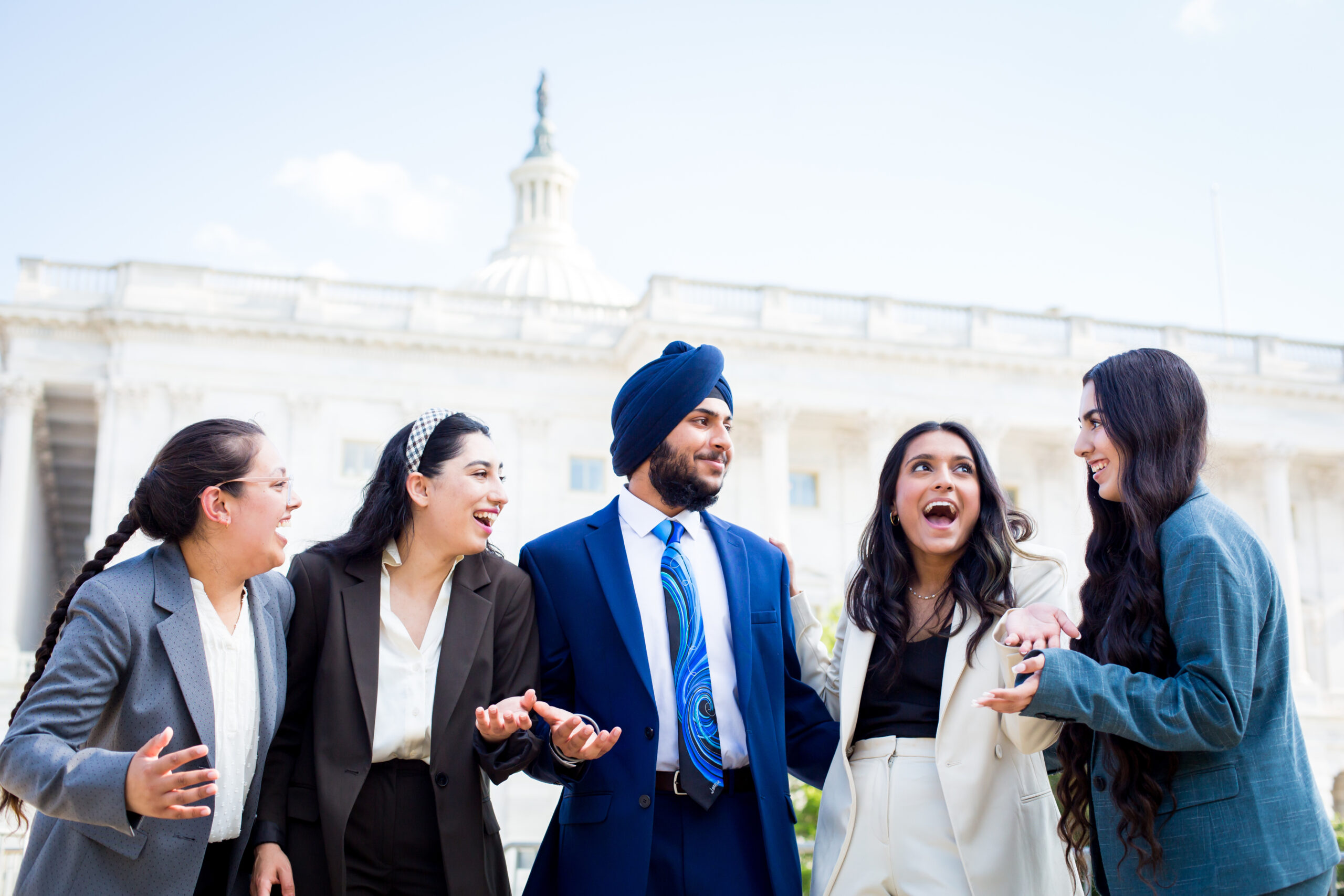Participants turn out to celebrate their religion and bring awareness to recent hate crimes. By Jia-Rui Chong, Times Staff Writer April 9, 2007 With gold- and orange-fringed parade floats and the sound of harmoniums playing traditional hymns, more than 10,000 members of the Sikh community paraded through downtown Los Angeles on Sunday. Many participants wore traditional Sikh turbans as they celebrated Baisakhi, a harvest holiday that commemorates a key moment in the development of the religion. On the minds of many were recent hate crimes, made all the worse as they were apparently provoked by mistaken identity. “People don’t know. They think we’re Muslims,” said Raj Singh, 66, a Brea resident who was watching a float go by. “I hope, for the people standing on the road, or seeing this from their roofs, this will enlighten them.” Last month, a Redding man rammed a construction tractor into a Sikh temple and reportedly told police that he thought the building was owned by Arabs. Sikh leaders say such incidents have become more common since the terrorist attacks of Sept. 11, 2001. “People see Osama bin Laden with a turban and beard, and they see us as the same because of ignorance,” said Sarbjit Singh, who teaches children about Sikh religion and culture at the Sikh Study Circle in Los Angeles. (None of the Singhs interviewed for this article are related.) Sarbjit Singh, 45, said that he doesn’t blame anybody for the harassment and that the Sikh efforts should not be taken to mean that the community believes it’s acceptable to discriminate against Muslims. “It hurts us when anybody gets harassed,” he said. Kavneet Singh, the Oakland-based managing director of the national Sikh American Legal Defense and Education Fund, said his office gets calls every month about acts of discrimination or misunderstanding about the religion. In one case this year, he said, a man was refused entrance to a bar in Costa Mesa because owners had a policy of not allowing hats — and he was wearing a turban. “There’s a real need for us to be more engaged in our communities,” said Kavneet Singh. “We need to introduce ourselves to our neighbors and make sure local law enforcement know who we are.” Baisakhi, which marks the year’s first harvest and the day when a principal guru in Anandpur Sahib, India, codified the religion’s spiritual and personal codes of conduct. For example, adherents keep their hair long and wear turbans as crowns of spirituality. Sikhism is the world’s fifth-largest religion with about 23 million practitioners worldwide. About 15 Sikh temples around California came together for the event. Daman Singh, 55, of Anaheim Hills said her family comes every year to L.A. to celebrate Baisakhi, which is also considered an auspicious day to get married. “It’s like people celebrate Christmas every year,” she said. As parade-goers talked about how the holiday is celebrated in India, Daman Singh pointed to a small boy who was in her husband’s arms. “This is for our grandson, to show him the culture of our land,” she said. Onlookers leaving the Lakers game at nearby Staples Center were at first puzzled by the glittering floats and sea of people, many of them in fancy embroidered versions of the traditional long shirt and pants known as shalwar kameez. Christian Portillo, 13, of Inglewood wondered, “Weren’t they a bunch of Islamic people?” Christian’s friend Cameron Harris, 13, of Gardena knew the difference. Cameron said he had asked one of the people in the parade what was going on and found out that they were celebrating a Sikh holiday. He said he understood his friend’s confusion because many ethnic groups wear turbans. “I got the message that they were trying to explain themselves and not be seen as outsiders,” Cameron said. “They look like good people to me.”
jia-rui.chong@latimes.com http://www.latimes.com/
